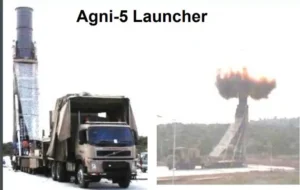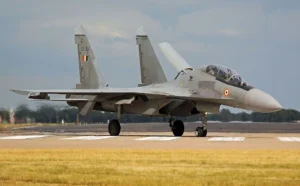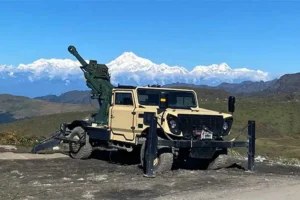Introduction
The Indian Air Force (IAF) is the aerial warfare component of the Indian Armed Forces and is a noteworthy and attention-deserving force to reckon with. Since its inception on October 8, 1932, this force has participated and shown its valour in various war campaigns, ranging from the Burma Campaign in 1942 to the Kargil War in 1999. It is an extremely disciplined entity that has left no stone unturned to enhance India’s defence and glory in the world order
Importance of Indigenisation
With the commencement and arrival of the Narendra Modi government in 2014 to the national political platform of India, there has been a deep thrust on self-reliance and indigenisation. Indigenisation is an important parameter which cannot be ignored. Indigenisation is crucial to a country’s economy. It is a significant indicator of a nation’s economic power and strength.
Economic Power and Military Power are the two most important elements which are central to the power any state possesses. A country with economic power can purchase more military hardware, but too much dependence on foreign sources cannot make that state a robust military power. Conversely, having great military power but poor economic strength, like DPRK (North Korea), do not come under the category of powerful states.
One could run out of critical things like ammunition in the middle of a war or have problems in having spares, and if the supplier state is facing economic and political doldrums, even external pressure by other powerful states on supplier nations can be detrimental to the importing nation.
Hence, if a state is self-reliant, the above-mentioned problems are taken care of in the first place. It is also cost-effective. This implies that the enormous monetary capital can be directed to sectors other than the military or any other branch of defence.
Keeping this in mind, the Narendra Modi government has kickstarted two important initiatives, which are “Make in India” and “Atmanirbhar Bharat,” which aim to make India a self-reliant power and absolutely free from import dependence. The primary players or entities involved in the indigenisation Process are DPSUs, DRDO, Private Sector and HAL
History of Indigenisation in The Indian Air Force
Indigenisation in the Indian Air Force is not a new phenomenon. The very first indigenous weaponised flying platform was the HF-24 Marut fighter jet developed by Hindustan Aeronautics Limited (HAL). It was used extensively in the Bangladesh Liberation War (Indo-Pakistan War of 1971, including the Battle of Longewala).
However, the bulk of the aircraft fleet of the IAF at that time was predominantly French and then Soviet. The legacy continues today. A huge chunk of aerial assets of the IAF are Russian, followed by France and then the United States of America (USA) in recent years. The backbone of Indian jets is ageing and is becoming obsolete as technology advances its steps forward. This also includes the transport and helicopter fleet of the IAF.
IAF’s watershed moment and landmark indigenous achievement came to the forefront after the “TEJAS LCA” (Light Combat Aircraft) was inducted into the inventory of the force. The primary reason to build this jet was to replace the extremely old and frugal MiG-21 Bison that had claimed the lives of many talented young pilots.
Current And Future Indigenisation Plans
Fighter Aircraft
The Indian Air Force is working on various “Make in India Projects”, which are worth over 3.5 lakh crores rupees as a part of its indigenisation process and efforts in the defence sector. The list of weapon systems includes the 180 TEJAS MK-1A. The first contract of 83 aircraft has been signed, while the project for the remaining 97 aircraft is set to get clearance from the Defence Ministry soon.
Also, in the fighter aircraft domain, the IAF is taking up a major programme to upgrade the Su-30MKI aircraft at a cost of Rs 65,000 crores. The project will be carried out indigenously by the HAL and will include indigenous radars and avionics.
The Aeronautical Defence Agency (ADA) has completed the design of the Advanced Medium Combat Aircraft (AMCA) to supplement the Sukhoi Su-30MKI and the Dassault Rafale Fighters. It is also working on a Medium Weight Fighter (MWF), also called TEJAS MK-2. This aircraft will be replacing the old strike fighters of the IAF, such as Mirage 2000, Jaguar and MiG-29
Helicopters
As far as helicopters are concerned, the IAF has inducted HAL Rudra, HAL Dhruv and Prachand LCH Helicopters to supplement the Apache Chinook Helicopters acquired from the US and replace the ageing Cheetah and Chetak Helicopters in its armoury. It has also ordered 156 LCH, and in the future, HAL is creating an indigenous Multirole-Helicopter Programme as well.
Transport Wing
The Transport Wing of the Indian Air Force deserves considerable attention. Most of the aircraft in the transport domain are imported. Examples include C-17 Globemaster (USA), and C-130J Hercules (USA) Ilyushin (IL-76).
Some indigenous strides taken in this field are the C-295 Aircraft from Airbus. Around 16 of them will be acquired from Spain, and the remaining 40 aircraft will be manufactured by TATA Advanced Systems Limited (TASL) in Gujarat, India. This will replace the Avro Transport aircraft of the force. The IAF is planning to start a Medium Transport Aircraft System to replace the Embraer transport planes.
Unmanned Aerial Vehicles
India acquires most of its unmanned aerial platforms from Israel Aerospace Industries (IAI) like Heron, Harpy, and Harop UAVs. In this field, the DRDO is developing an indigenous drone called the Rustom, which is set to replace the IAI Heron Drones. Also, DRDO is developing an unmanned aerial combat vehicle called the Ghatak (meaning lethal). It will be capable of delivering laser-guided strike weapons and will have stealth features as well.
Project Kusha
IAF is working on Project Kusha, under which it is going to get five units of LRSAM (Long Range Surface to Air Missiles) similar to that of the current S-400. Other missiles developed by the DRDO include the Pralay Ballistic Missiles Akash NG series of missiles to replace the Barak-8 missiles. The project has been given approval for RS 21,700 crores and will involve the DRDO and the private sector industry.
For the future, the DRDO is working on the XRSAM (Extra Long Surface to Air Missile System) that would be used along with the S-400 Russian air defence system
Trainers
The Indian Air Force is also going to get the basic trainer aircraft in the HTT-40 being built by the HAL at a cost of Rs 6,100 crores. The HAL has also recently tested a two-seated trainer version of the LCA Tejas, which is completely indigenous.
https%3A%2F%2Fwww.defencenews.in%2F2023%2F10%2Fon-a-war-footing-indigenisation-of-the-indian-air-force%2F







